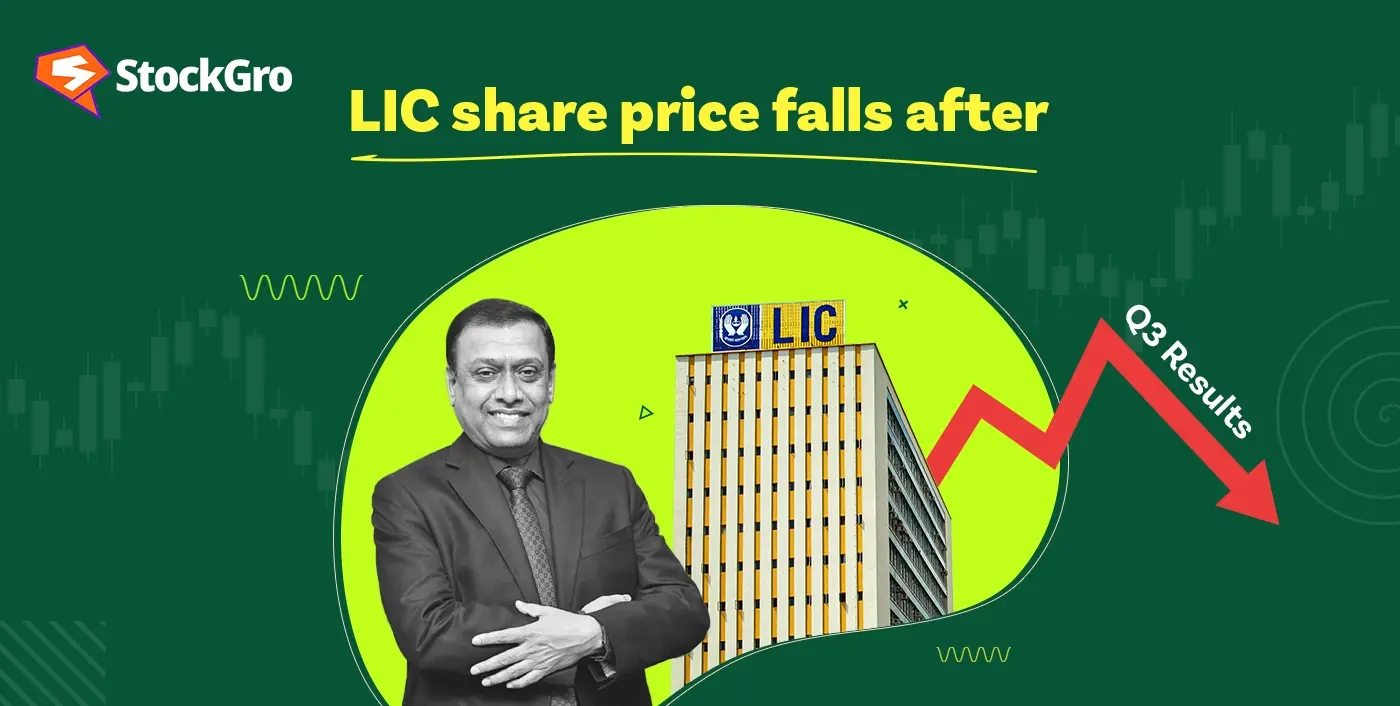
LIC’s latest Q3 earnings have stirred the market. The company posted a net profit growth of 17%, yet its share price has taken a hit. With brokerages revising their target prices, should investors buy, hold, or sell? Let’s break it down.
LIC Q3 FY25 financial performance
Before making an investment decision, let’s look at LIC’s financials from the latest quarter.
| Metric | Q3FY25 | Q3FY24 | Change (%) |
| Net Profit (₹ crore) | 11,056 | 9,444 | +17% |
| Net Premium Income (₹ crore) | 1,07,302 | 1,17,432 | -9% |
| Annual Premium Equivalent (APE) (₹ crore) | 9,950 | 13,162 | -24% |
| Value of New Business (VNB) Margin (%) | 19.4 | 26 | -6.6% |
| Assets Under Management (AUM) (₹ crore) | 54,77,651 | 49,66,371 | +10.3% |
LIC’s net profit rose primarily due to a decline in employee-related expenses, but the decline in premium income and key business indicators raised concerns.
Also read: LIC SIP Calculator – calculate your investment returns
Why did LIC’s share price fall?
Despite a strong net profit, LIC’s stock has dropped post-Q3 results. Here’s why:
- Decline in new business premiums: LIC’s new business premium (NBP) fell 21% YoY, indicating sluggish growth in fresh policy sales.
- Lower VNB margins: The value of new business margin—a key metric for insurance profitability—fell to 19.4% from 26% last year.
- Brokerage downgrades: Multiple brokerages cut target prices, citing lower premium growth and regulatory impacts.
- Market sentiment: LIC stock has already declined 28% in six months and 10% YTD, making investors cautious.
LIC share price trend: Past performance and future outlook
| Timeframe | % Change in Share Price |
| 1 Month | -3% |
| Year-to-Date | -10% |
| 6 Months | -28% |
| 1 Year | -25% |
| 2 Years | +30% |
LIC shares have been under pressure, but over a two-year period, the stock has delivered a 30% return. The question now is—will it recover?
You may also read: LIC vs mutual fund: Unbiased guide to smarter investing
Should you buy, hold, or sell LIC shares?
Here’s a breakdown of factors to consider:
Reasons to Buy
- Attractive valuation: LIC is trading at 0.6x FY27 expected embedded value (EV), making it relatively inexpensive.
- Non-par product push: LIC’s focus on non-par products could boost margins in the long term.
- Strong AUM growth: LIC’s AUM grew 10.3% YoY, reinforcing its financial stability.
- Market leader: Despite the challenges, LIC holds a dominant 57.42% market share in first-year premium income.
Reasons to Hold
- Uncertainty over new regulations: The impact of regulatory changes on commission structures remains unclear.
- Brokerage downgrades: Some analysts have lowered LIC’s price target, indicating near-term caution.
- Slowing policy sales: The decline in individual policy sales (down 6.73% YoY) is a red flag.
Reasons to Sell
- Earnings slowdown: Falling premium income could limit future profit growth.
- Weak APE performance: LIC’s annual premium equivalent fell 24% YoY, signaling weaker revenue growth ahead.
- Stock underperformance: LIC’s stock has been on a declining trend for the past six months to a year.
Final thoughts: What should investors do?
LIC remains India’s largest insurer, but its premium income and new business margins are under stress. While the stock is attractively valued and has long-term growth potential, the near-term outlook remains uncertain due to regulatory changes and declining policy sales.
- Short-term traders may find LIC’s stock volatile.
- Long-term investors may consider accumulating on dips, given its strong market presence and improving non-par product mix.
Investors should track upcoming quarters for signs of premium growth recovery before making a major commitment.

